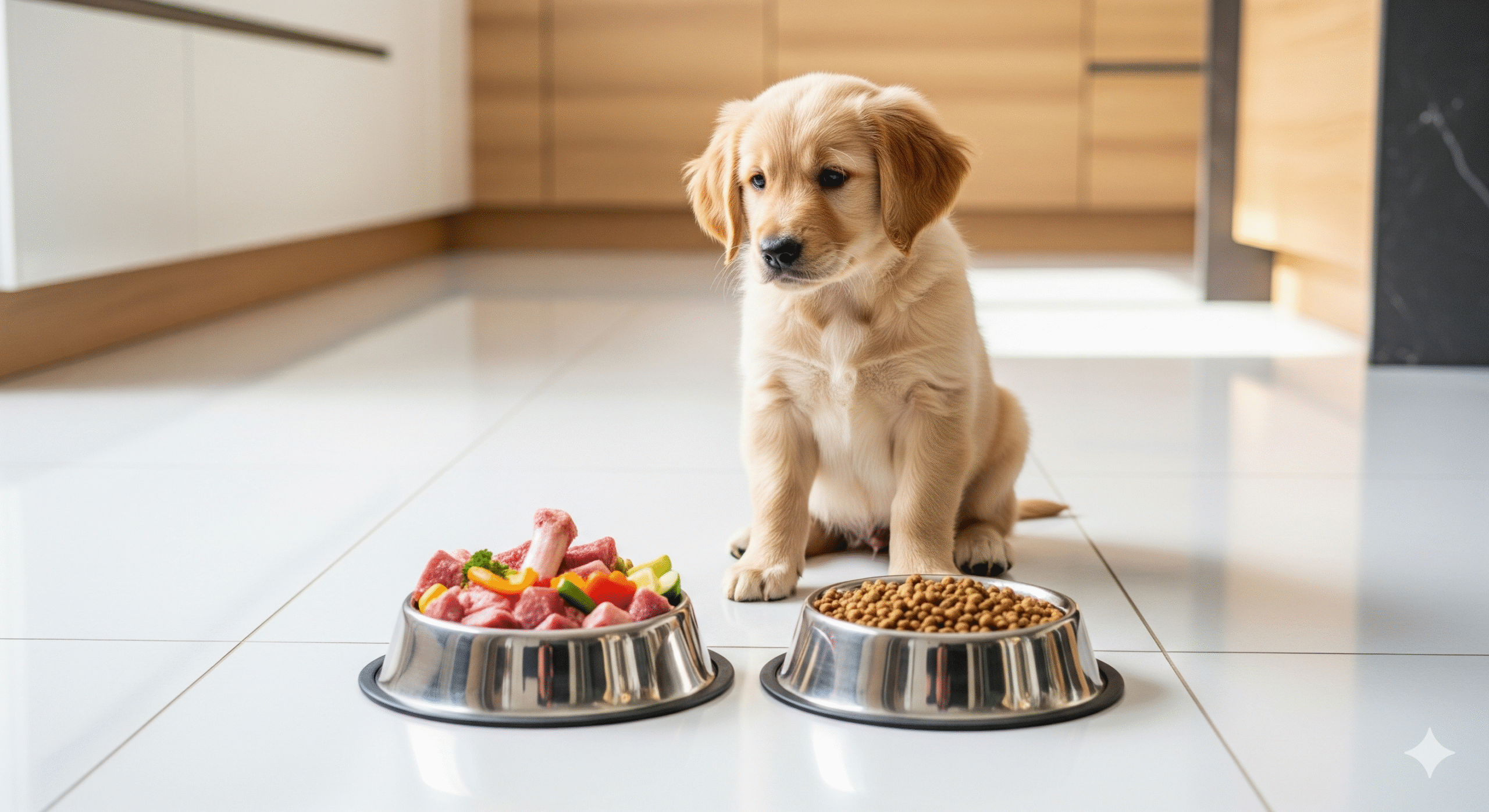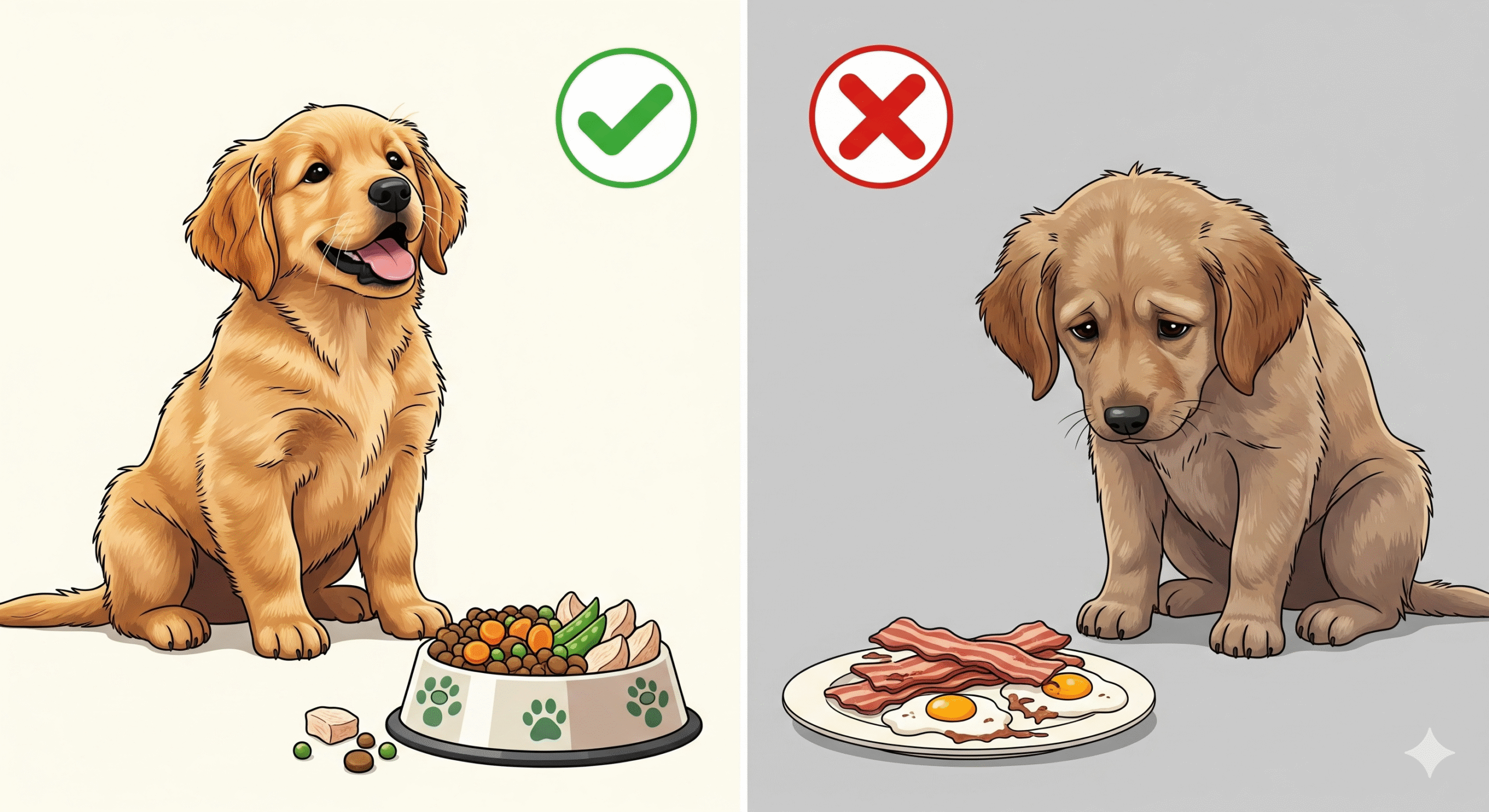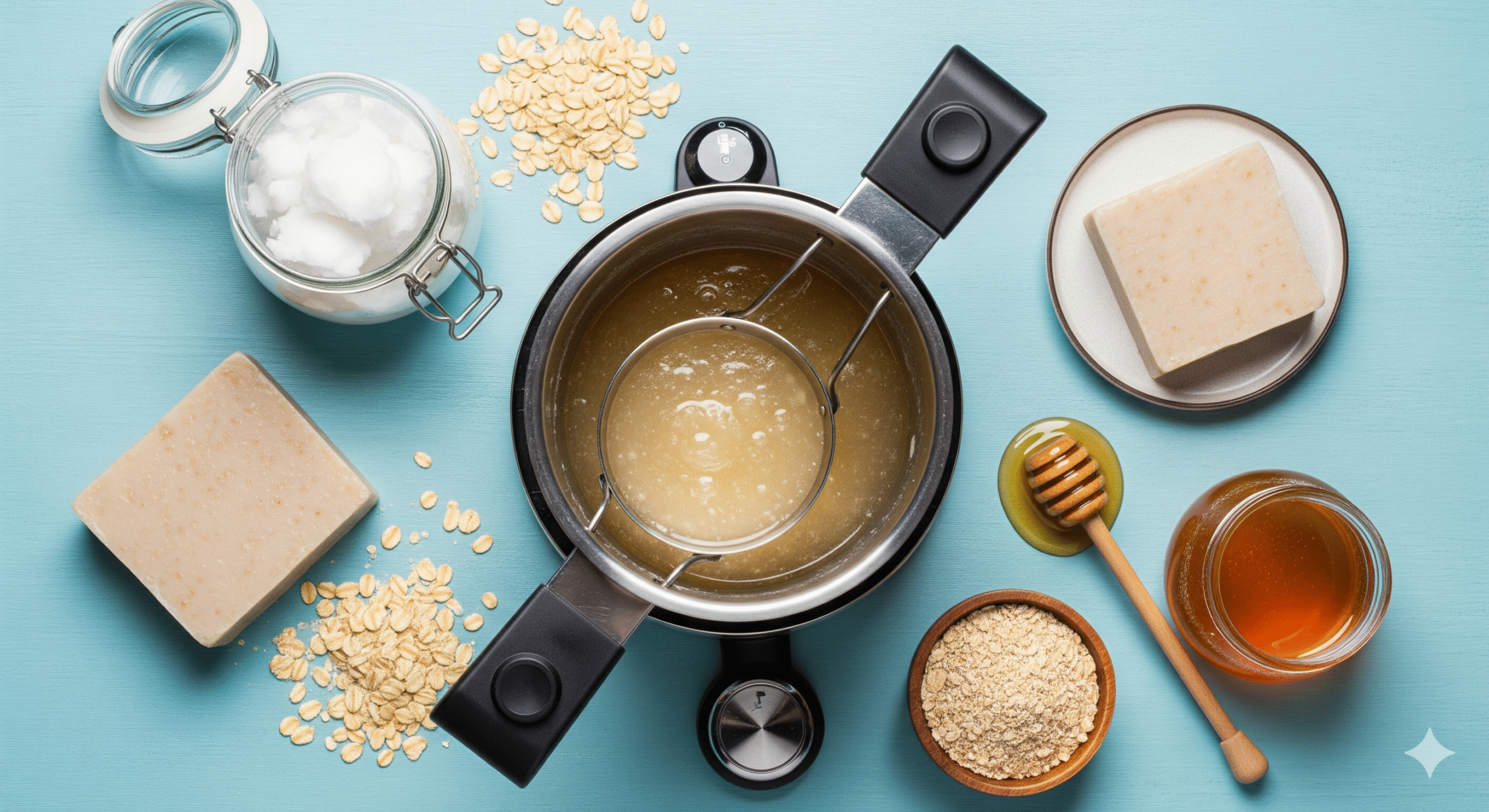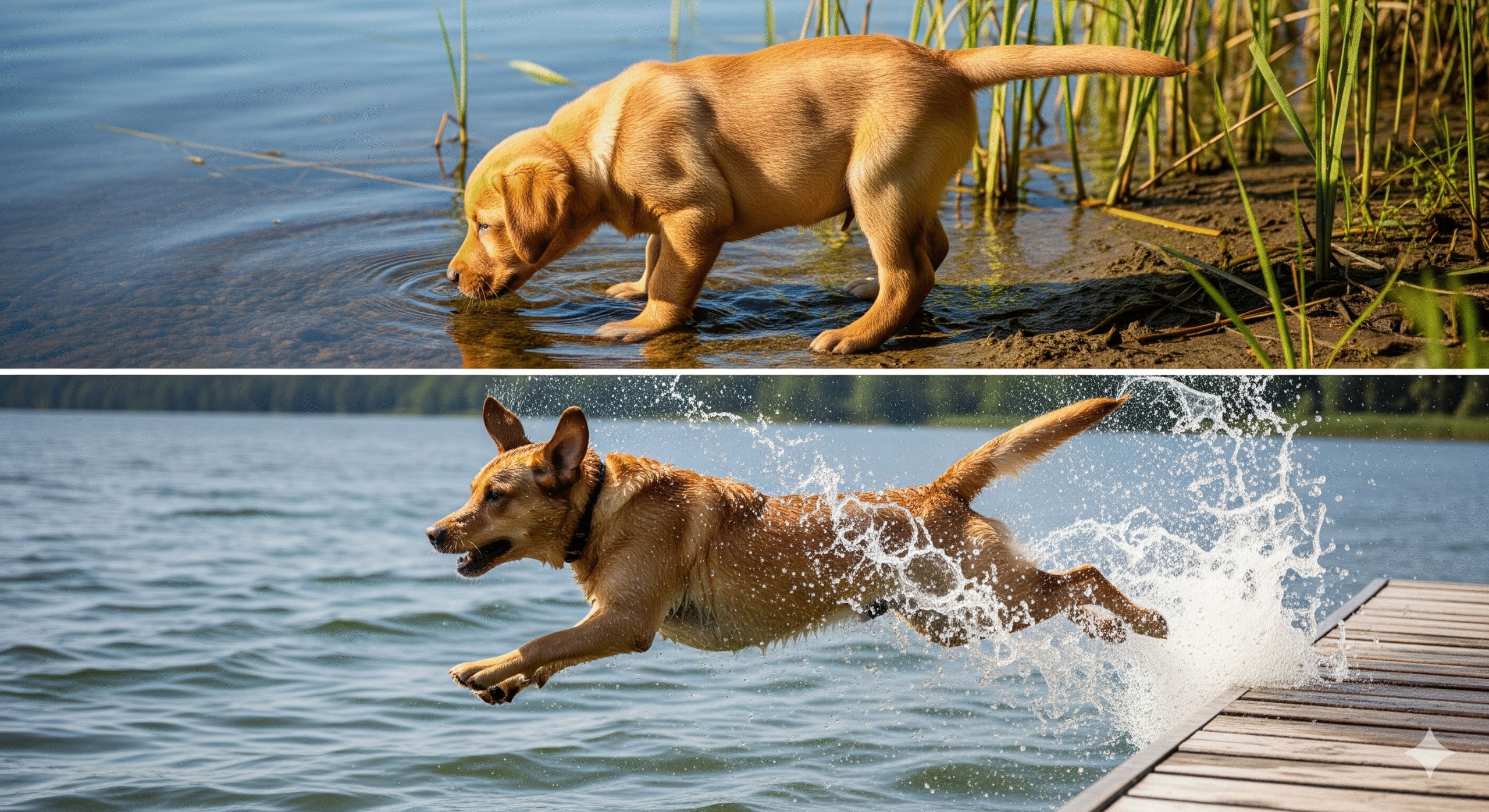The decision of what to feed your growing puppy is one of the most significant choices you’ll make as a pet owner. Among the various options, raw diets for puppies have gained substantial attention, promising everything from shinier coats to more natural energy levels. Proponents argue that feeding “Biologically Appropriate Raw Food” (BARF) mirrors what canines would consume in the wild. However, this practice is also surrounded by intense debate, particularly concerning the unique nutritional needs and vulnerabilities of developing puppies.
Navigating the polarizing opinions can be overwhelming. This comprehensive guide aims to cut through the hype and fear, providing a balanced, evidence-based examination of raw feeding for puppies. We’ll equip you with the facts to make an informed decision that prioritizes your puppy’s health and safety above all else.
Here’s what we’ll cover:
✔️ What a raw puppy diet actually entails and the different approaches (BARF vs. Prey Model)
✔️ The potential benefits touted by advocates and what science says
✔️ The significant risks and challenges, with a special focus on growing puppies
✔️ A step-by-step safety protocol for those who choose to proceed
✔️ How to ensure nutritional balance for optimal growth and development
✔️ Veterinary perspectives on the safety and practicality of raw feeding
Let’s dive into the complex, crucial world of raw nutrition for growing dogs.
What is a Raw Food Diet for Puppies? 🧐
A raw food diet typically consists of uncooked ingredients designed to mimic a wild canine’s presumed diet. While formulations vary, most include:
- Muscle Meat: The foundation of the diet (e.g., chicken, turkey, beef, lamb).
- Raw Meaty Bones (RMBs): Essential for calcium, phosphorus, and dental health (e.g., chicken wings, necks, backs). Size-appropriateness is critical to avoid choking.
- Organ Meats: A vital component for vitamins and minerals (e.g., liver, kidney, heart). Liver should not exceed 5% of the total diet.
- Other Ingredients: Some plans include small amounts of vegetables, fruits, eggs, dairy (like yogurt), or supplements to create a balanced meal.
The two primary models are:
- Prey Model: Focuses almost exclusively on meat, bones, and organs, excluding most plant matter.
- BARF Model (Biologically Appropriate Raw Food): Includes meat, bones, organs, and also incorporates vegetables, fruits, and other ingredients like seeds and dairy.
The Proposed Benefits of Raw Feeding for Puppies 🏆
Advocates for raw feeding report numerous anecdotal benefits, though robust scientific backing is often limited.
- Healthier Skin and Coat: Often attributed to the high levels of natural oils and fatty acids in raw meat.
- Improved Dental Health: Chewing on raw meaty bones can help scrape plaque and tartar off teeth, potentially reducing dental disease.
- Higher Energy Levels: Owners often report their puppies have more vibrant, sustained energy on a raw diet.
- Smaller, Less Stinky Stool: With more digestible, whole-food ingredients, less waste is produced, and it tends to be firmer and less odorous.
- Fewer Allergies: Some believe that eliminating processed ingredients, grains, and additives can reduce food allergies and sensitivities.
The Significant Risks and Challenges ⚠️
This is the most critical section for any puppy owner to understand. The risks are substantial and are the primary reason many veterinarians caution strongly against raw diets for puppies.
1. Nutritional Imbalance and Developmental Damage 🚫
This is the single greatest risk of a DIY raw diet. Puppies have extremely specific and strict requirements for calcium, phosphorus, fat, protein, and trace minerals to support their rapid bone and organ growth.
- Calcium/Phosphorus Ratio: This must be precisely balanced (ideally between 1.2:1 and 1.4:1). Too much or too little calcium, or an improper ratio, can lead to severe, irreversible consequences like metabolic bone disease, skeletal deformities, and stunted growth.
- Other Nutrients: Deficiencies or excesses in Vitamin D, Vitamin A, and zinc are also common in poorly formulated diets and can cause serious health problems.
2. Bacterial Contamination and Parasites 🦠
Raw meat can harbor dangerous pathogens like Salmonella, Listeria, E. coli, and Campylobacter.
- Risk to the Puppy: Can cause serious, sometimes fatal, gastrointestinal illness. Puppies have immature immune systems, making them more vulnerable.
- Risk to Humans: These bacteria can be shed in the puppy’s feces and saliva, posing a serious zoonotic health risk to humans in the household, particularly children, the elderly, and immunocompromised individuals.
- Parasites: Improperly sourced or frozen meat can contain parasites like Toxoplasma gondii or tapeworms.
3. Physical Hazards 🔨
- Choking: Bones can splinter or become lodged in the throat, esophagus, or digestive tract.
- Dental Fractures: Chewing on hard, weight-bearing bones can break a puppy’s teeth.
- Intestinal Perforation: Bone fragments can puncture the stomach or intestines.
How to Implement a Raw Diet Safely (If You Proceed) 🛡️
If you understand the risks and wish to proceed, doing so safely is non-negotiable. This is not a venture for beginners without expert guidance.
Step 1: Consult a Veterinary Nutritionist 🩺
This is not a suggestion; it is a requirement. Do not rely on internet recipes, books, or well-meaning friends. A board-certified veterinary nutritionist can:
- Formulate a balanced recipe specifically for your puppy’s breed, expected adult size, and age.
- Calculate precise portions based on growth curves.
- Recommend specific supplements to achieve nutritional adequacy.
- Recommend a commercial raw diet that is complete, balanced, and AAFCO-approved for “growth” or “all life stages.” This is often a safer choice for beginners.
Step 2: Practice Impeccable Hygiene 🧼
- Handle raw meat as you would for human consumption.
- Wash hands, bowls, utensils, and surfaces with hot, soapy water after every meal.
- Disinfect preparation areas with a bleach solution.
- Immediately pick up and dispose of your puppy’s stool.
- Deep freeze meat for a minimum of 2-3 weeks to kill most parasites.
Step 3: Source High-Quality Ingredients 🛒
- Use human-grade meat from reputable sources.
- Avoid meat that is discolored or has an off odor.
Step 4: Monitor Your Puppy Relentlessly 🔍
- Watch for signs of gastrointestinal upset: vomiting, diarrhea, lethargy.
- Ensure they are growing steadily and not becoming overweight or underweight.
- Get regular veterinary check-ups and blood work to monitor for nutritional deficiencies or excesses.
The Veterinary Perspective: A Word of Caution 🗣️
Major veterinary organizations like the American Veterinary Medical Association (AVMA), the American Animal Hospital Association (AAHA), and the FDA discourage raw diets, particularly for puppies, due to the public health risks and high potential for nutritional deficiencies.
Their stance, backed by numerous studies, is that the risks of pathogen exposure and nutritional imbalance outweigh the unproven benefits. Always discuss this choice openly with your veterinarian.
Final Checklist: Is a Raw Diet Right For You and Your Puppy? ✅
☑️ I have consulted with a board-certified veterinary nutritionist.
☑️ I understand and accept the risks of bacterial contamination to my family and puppy.
☑️ I am committed to practicing extreme, restaurant-level hygiene.
☑️ I have the time, budget, and freezer space to commit to proper sourcing and preparation.
☑️ I am prepared to monitor my puppy’s health closely and get regular veterinary blood work.
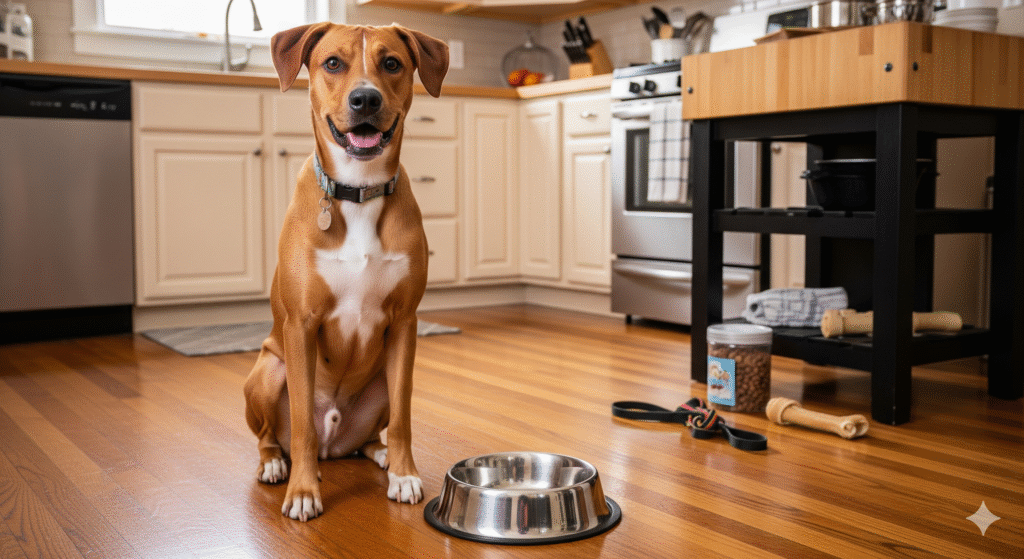
Own or Considering a Great Dane? Their incredible growth is a marvel to witness, but it comes with a huge responsibility to support it correctly. Proactive, informed nutrition is not optional—it’s essential for their long-term joint health and mobility. For a detailed guide on everything from choosing the right large-breed puppy food to interpreting growth charts, please read: Great Dane Puppy Growth & Nutrition.

